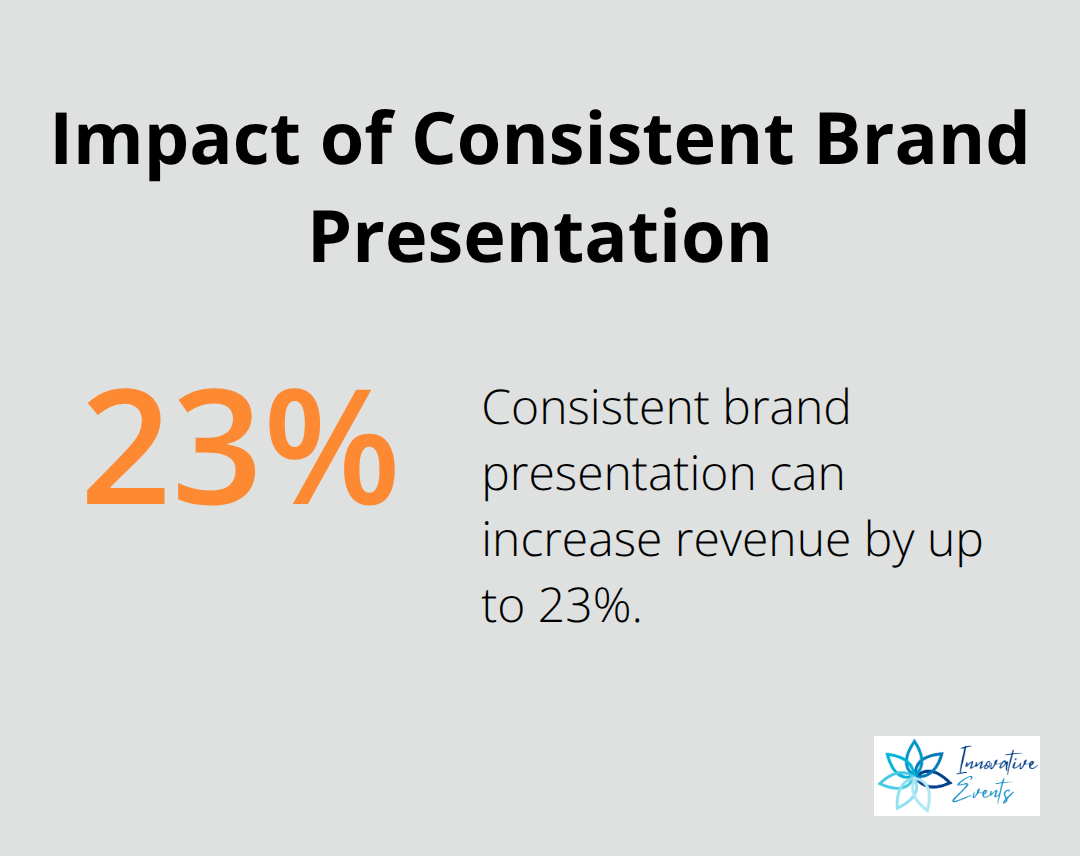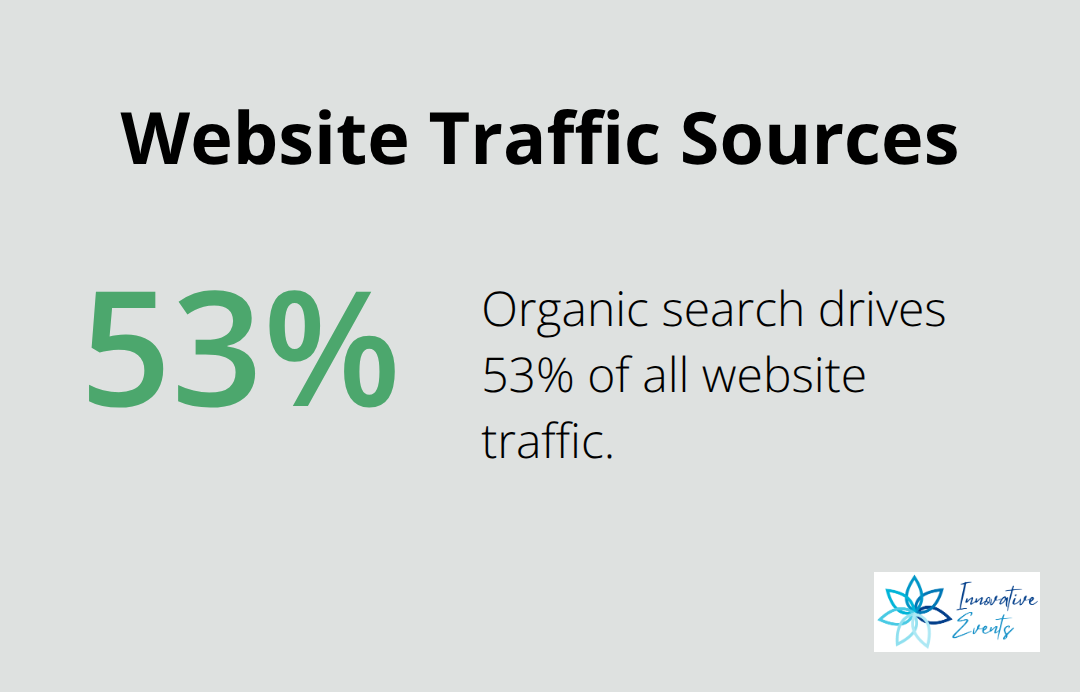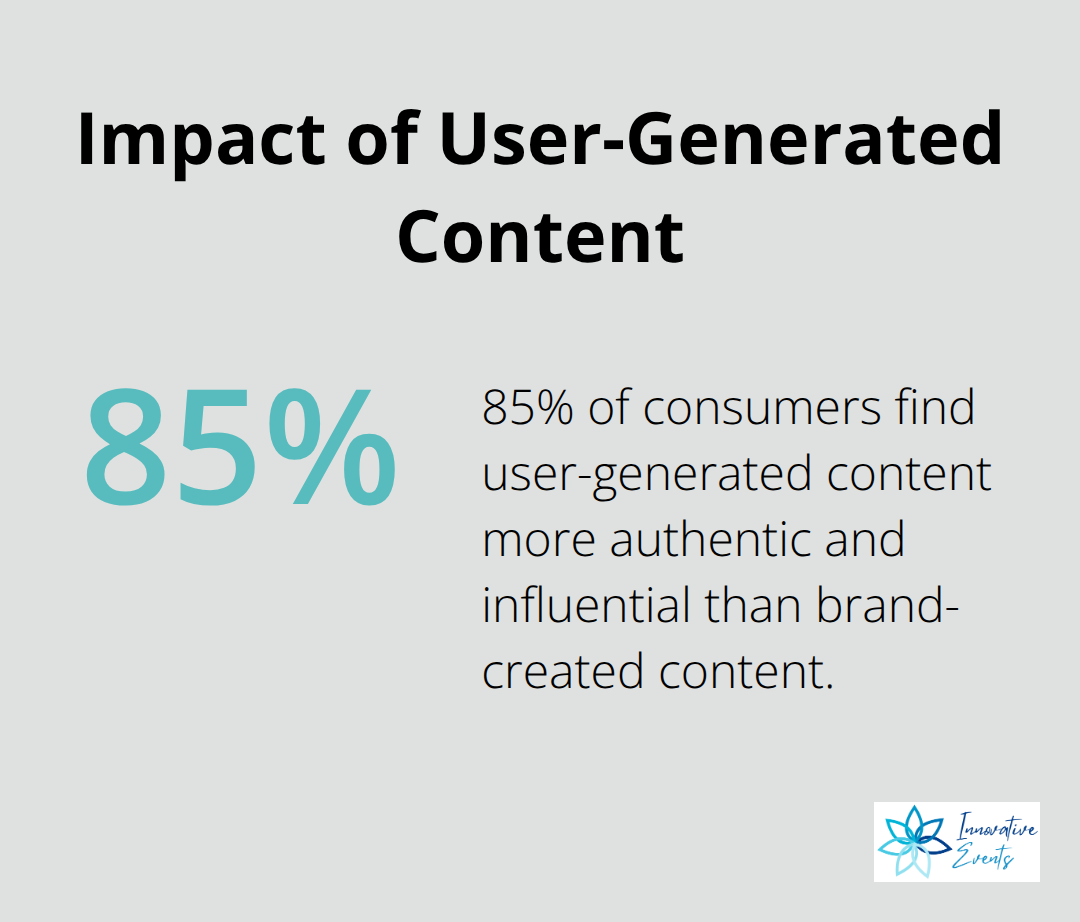In today’s digital landscape, a strong online brand strategy is essential for business success. At Innovative Events, we’ve seen firsthand how a well-crafted approach can transform a company’s online presence.
This blog post will guide you through the key elements of building an effective online brand strategy. From defining your brand identity to engaging with your audience, we’ll provide practical tips to help you stand out in the crowded digital space.
Defining Your Brand Identity
Uncover Your Brand’s Core
A strong brand identity forms the foundation of any successful online strategy. It’s not just about a logo or tagline; it’s about creating a cohesive image that resonates with your audience and distinguishes you from competitors.
Start by exploring what makes your company unique. What drives your business? What problems do you solve for your customers? These questions will help you articulate your core values and mission.
Pinpoint Your Audience
Knowing your audience is essential. Create detailed buyer personas based on demographic data, psychographics, and behavior patterns. Tools like Google Analytics provide valuable insights into your website visitors.
Craft Your Brand’s Voice
Your brand voice should reflect your company’s personality and resonate with your target audience. Is your tone formal or casual? Serious or playful? Innovative or traditional? Consistency is key here. A study by Lucidpress found that consistent brand presentation across all platforms can increase revenue by up to 23%.

Design a Visual Identity That Speaks Volumes
Your visual elements should align with your brand voice and values. This includes your logo, color scheme, typography, and imagery. Research from the University of Loyola found that color increases brand recognition by up to 80%. Choose wisely and apply these elements consistently across all your digital touchpoints.
Evolve Your Brand Strategy
Your brand identity isn’t static. It should evolve as your business grows and market conditions change. Reassess and refine your brand strategy regularly to ensure it continues to resonate with your target audience and reflect your company’s values and goals.
As we move forward, we’ll explore how to translate this strong brand identity into a powerful online presence that captivates and engages your audience.
Building a Powerful Online Presence
Your online presence serves as the digital face of your brand. It shapes first impressions for potential customers and maintains engagement with existing ones. A strong online presence can significantly impact a brand’s success.
Create a Website That Impresses
Your website often provides the first point of contact between your brand and potential customers. It must be visually appealing, user-friendly, and reflective of your brand identity. A study by Stanford University found that 75% of users judge a company’s credibility based on their website design. Invest in a responsive design that looks great on all devices (mobile traffic now accounts for more than half of all web traffic worldwide).
Optimize for Search Engines
Search Engine Optimization (SEO) plays a vital role in digital visibility. Organic search drives 53% of all website traffic, according to a study by BrightEdge. Focus on creating high-quality, relevant content that answers your audience’s questions. Use tools like Google’s Keyword Planner to identify keywords your target audience searches for, and incorporate them naturally into your content.

Leverage Social Media Platforms
Social media platforms provide invaluable opportunities for brand building and customer engagement. Select platforms where your target audience is most active. B2B companies might prioritize LinkedIn, while B2C brands often find success on Instagram or TikTok. Hootsuite’s Social Media Trends report indicates that 83% of marketers feel confident that social media marketing delivers ROI for their business.
Demonstrate Expertise Through Content
Content marketing proves a powerful way to showcase your industry knowledge and build trust with your audience. HubSpot’s State of Marketing report reveals that 82% of marketers actively use content marketing. Create a mix of content types to enhance brand perception, increase brand effectiveness, and significantly lift purchase intent and loyalty.
Foster Relationships Through Engagement
Building a strong online presence requires more than broadcasting your message; it demands fostering relationships. Respond promptly to comments and messages across all platforms. Sprout Social reports that 40% of consumers expect brands to respond within the first hour of reaching out on social media, while 79% expect a response in the first 24 hours.
The digital landscape continues to evolve, and your online presence must adapt accordingly. Use analytics tools to track your performance across different platforms. Pay attention to metrics like website traffic, engagement rates on social media, and conversion rates. These insights will help you refine your strategy and stay ahead of the curve.
As you establish a strong online presence, the next step involves engaging your audience effectively. Let’s explore how to create meaningful interactions that resonate with your target market and drive brand loyalty.
How to Engage Your Audience Effectively
Craft Content That Sparks Conversations
Your content strategy should focus on creating value for your audience. The Content Marketing Institute reports that 72% of marketers say content marketing increases engagement. Identify your audience’s pain points and interests. Use tools like BuzzSumo to discover trending topics in your industry.
Create a mix of educational and entertaining content. For example, a fitness brand should combine workout tutorials with motivational success stories. Use storytelling techniques to make your content more relatable and shareable.
Harness the Power of User-Generated Content
User-generated content (UGC) provides social proof and fosters a sense of community. 85% of consumers find UGC more authentic and influential than brand-created content, and it’s 5× more likely to convert shoppers than traditional ads.

Encourage customers to share their experiences with your brand. Run contests or campaigns that prompt users to create and share content. A clothing brand could ask customers to post photos wearing their outfits with a branded hashtag.
Master the Art of Timely Responses
Quick responses are non-negotiable in today’s fast-paced digital world. A study by Convince & Convert found that 42% of consumers expect a response on social media within 60 minutes.
Implement a system to monitor and respond to customer inquiries across all platforms. Use tools like Hootsuite or Sprout Social to manage multiple social media accounts from one dashboard. Train your team to handle different types of inquiries and maintain a consistent brand voice in all interactions.
Create Interactive Experiences
Interactive content can significantly boost engagement. DemandGen reports that 91% of buyers prefer interactive and visual content over static content.
Try to incorporate quizzes, polls, or interactive infographics into your content strategy. A travel company could create a quiz that helps users discover their ideal vacation destination based on their preferences.
Live streaming is another powerful tool for real-time engagement. Platforms like Instagram Live or Facebook Live allow you to host Q&A sessions, product demonstrations, or behind-the-scenes peeks (which foster a sense of exclusivity and immediacy).
Measure and Adapt Your Engagement Strategies
Use analytics tools to track the performance of your engagement efforts. Monitor metrics such as engagement rates, click-through rates, and conversion rates. These insights will help you refine your strategies and improve your audience engagement over time.
Try A/B testing different types of content, posting times, and engagement techniques to identify what resonates best with your audience. This data-driven approach (combined with a deep understanding of your audience) will help you create more effective engagement strategies.
Final Thoughts
An effective online brand strategy requires careful planning and consistent execution. Your brand voice, visual elements, and messaging must align across all digital channels to build trust and recognition. We recommend you evaluate your performance regularly using analytics tools and adjust your approach based on the insights you gather.
The digital landscape changes rapidly, and your online brand strategy must adapt. New trends and technologies emerge constantly, offering opportunities to enhance your brand’s online presence. You should stay informed about these developments and incorporate relevant ones into your strategy.
At Innovative Events, we understand the power of a well-crafted online brand strategy in today’s digital world. Our “9 Summits in 9 Months” initiative demonstrates how a holistic approach yields powerful results. We invite you to explore how our personalized, integrative lifestyle program can help you achieve similar success in your professional life.

